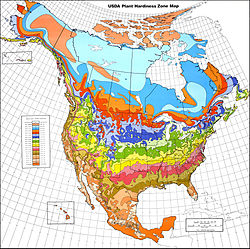Catnip
| Nepeta cataria | |
|---|---|

| |
| Catnip | |
| Scientific classification | |
| Kingdom: | |
| Division: | |
| Class: | |
| Order: | |
| Family: | |
| Genus: | |
| Species: | N. cataria
|
| Binomial name | |
| Nepeta cataria | |
Nepeta cataria is a plant in the Lamiaceae family.
Uses
'Nepeta cataria or "catnip" or "catmint" is mostly used as a toy for feline enjoyment. Around 2 out of every 3 cats will be affected by the plant, and approximately 2 hours after an exposure, the feline will be ready for another dose. Whether it is growing in the wild or harvested and dried, felines boldly show the affects of the plant. The common behaviors that are observed are: rubbing on the plant, rolling on the ground, drooling, or consuming much of the plant. It is said that felines go for the smell of the plant more than anything. Felines have such a strong sense of smell that they can detect the chemical nepetalactone, which is the main active ingrediant in Nepeta cataria. This chemical enters the felines nose, and produces semi-hallucinogenic effects on the cat. These effects have been proven to be harmless to the feline.[neutrality is disputed] If anything, catnip is beneficial in that it induces aerobic exercise and a pleasant "high" feeling to the cat. Catnip also has potential human benefits; when the leaves are consumed, either in a tea or by some other method, upset stomachs and diarrhea are calmed. Although catnip should not be smoked, it combines well with tobacco and other herbs to provide a "minty" taste.
History
"Catnip" was briefly banned in the 1970s because people were growing it solely to smoke it. The effects of smoking catnip leaves are quite minimal on humans, so the ban did not last long.[citation needed]
Hardiness
USDA Zone 3a: to -39.9 °C (-40 °F)
USDA Zone 3b: to -37.2 °C (-35 °F)
USDA Zone 4a: to -34.4 °C (-30 °F)
USDA Zone 4b: to -31.6 °C (-25 °F)
USDA Zone 5a: to -28.8 °C (-20 °F)
USDA Zone 5b: to -26.1 °C (-15 °F)
USDA Zone 6a: to -23.3 °C (-10 °F)
USDA Zone 6b: to -20.5 °C (-5 °F)
USDA Zone 7a: to -17.7 °C (0 °F)
USDA Zone 7b: to -14.9 °C (5 °F)
USDA Zone 8a: to -12.2 °C (10 °F)
USDA Zone 8b: to -9.4 °C (15 °F)
USDA Zone 9a: to -6.6 °C (20 °F)
USDA Zone 9b: to -3.8 °C (25 °F)

References
- ^ "Nepeta cataria information from NPGS/GRIN". www.ars-grin.gov. Retrieved 2008-04-07.
